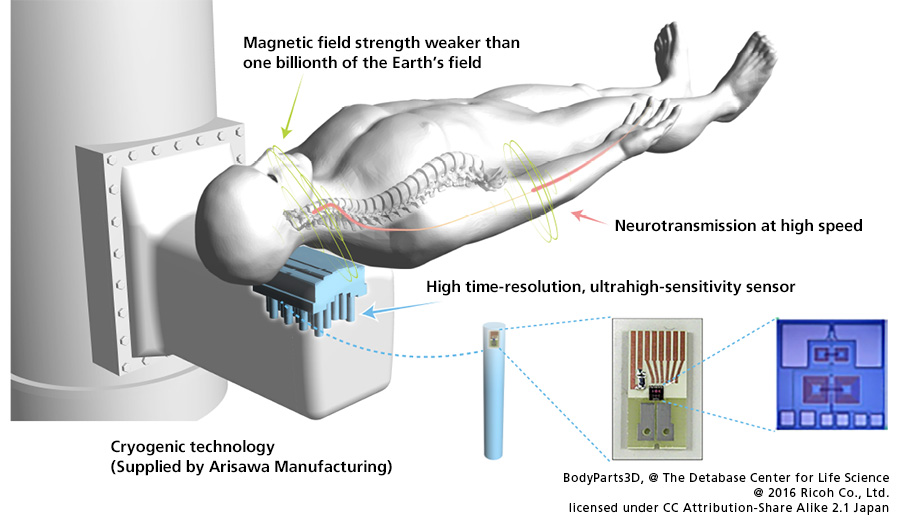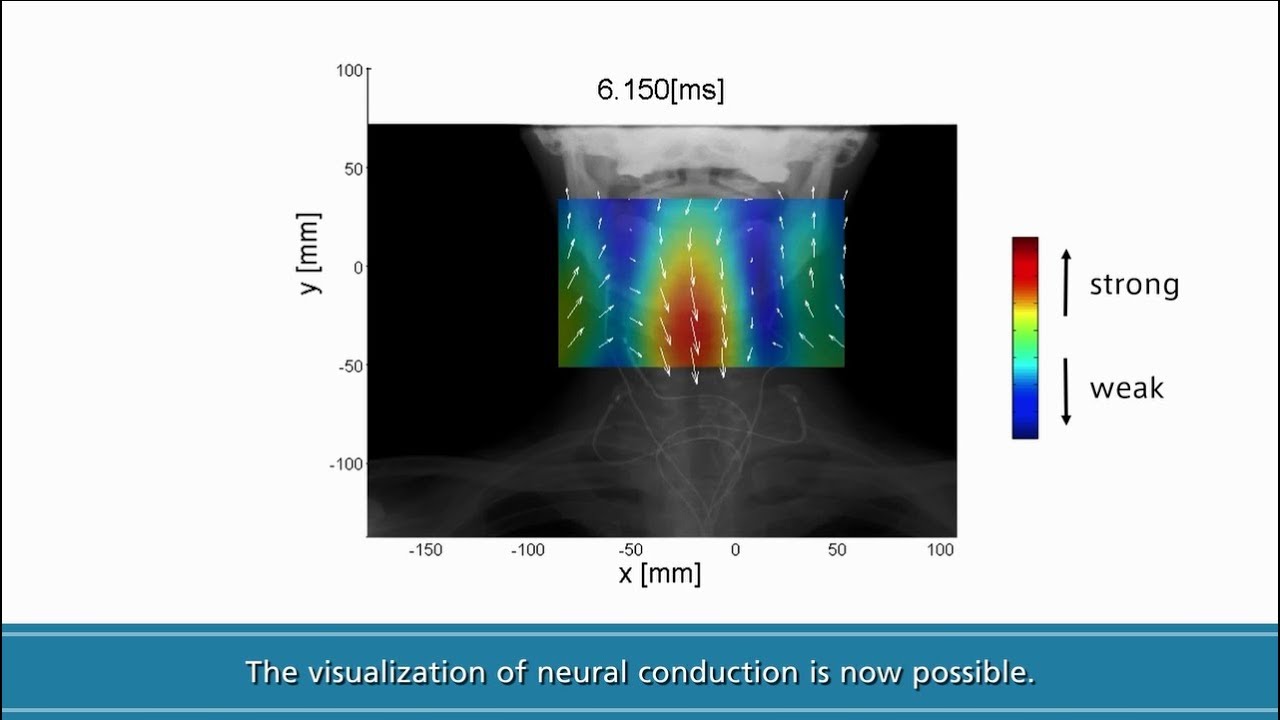- Home
- Technology
- Ricoh's Technology
- Visualization of nerve activity in the spinal cord and peripheral nerves
Visualization of nerve activity in the spinal cord and peripheral nerves
Background
With the development of a hyper-aged society, the number of patients suffering from spinal cord diseases increases yearly. Disorders including numbness and pain in limbs, paralysis, gait disturbance, upper limb pain, and lower limb pain can lead to loss of musculoskeletal function and the need for nursing care. Imaging tests that visualize the body's shape, such as MRI*1, are mainly used to diagnose these disorders.
However, since tests that look at the body's shape cannot identify the location of nerve activity damage, it is challenging to measure nerve activity accurately. The currently used methods include direct measurement of nerve flow by needle, a physically demanding and invasive procedure.
- *1
- MRI: Magnetic Resonance Imaging
Solutions
Ricoh's technology to measure nerve activity visualizes nerve activity in the spinal cord and peripheral nerves—which have been difficult to measure—noninvasively (without harming the body) and with high spatial resolution. Overlaying nerve function information (measured by the technology to measure nerve activity ) on conventional diagnostic methods such as MRI and CT*2, which look at the shape (morphological image), enables an objective evaluation of the severity of spinal cord and peripheral nerve damage and is expected to lead to appropriate therapeutic intervention.
- *2
- CT: Computed Tomography

Technical highlights
This technology to measure and visualize nerve activity noninvasively, was developed by Ricoh in collaboration with Tokyo Medical and Dental University and Kanazawa Institute of Technology.
 Schematic depiction of the system
Schematic depiction of the system
- Capable of detecting an extremely weak magnetic field, less than one billionth of the Earth's magnetic field.
- Capable of measuring neural conduction—as fast as 60 meters per second—in microseconds.
- Visualization of nerve activity currents by detecting extremely weak magnetic fields generated by nerves from the body.
Ricoh's vision
Ricoh intends to use its innovative image processing technologies, nurtured through the development of imaging devices, to better diagnose spinal disorders in patients to improve their quality of life.
Related information
There are a number of papers related to this technology. Please contact us for links to the papers.
This technology information is intended to provide information on the results of our research activities and is not a product advertisement. In addition, this technology is in the research phase and cannot be sold or awarded.
Sorted by : field “Medical Imaging” “Sensing” | product type “Healthcare”
